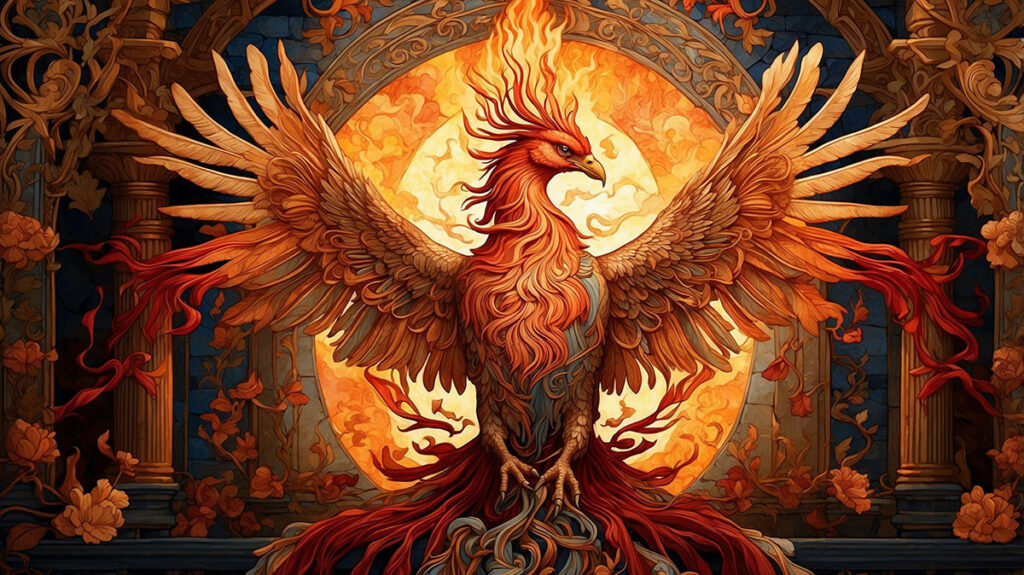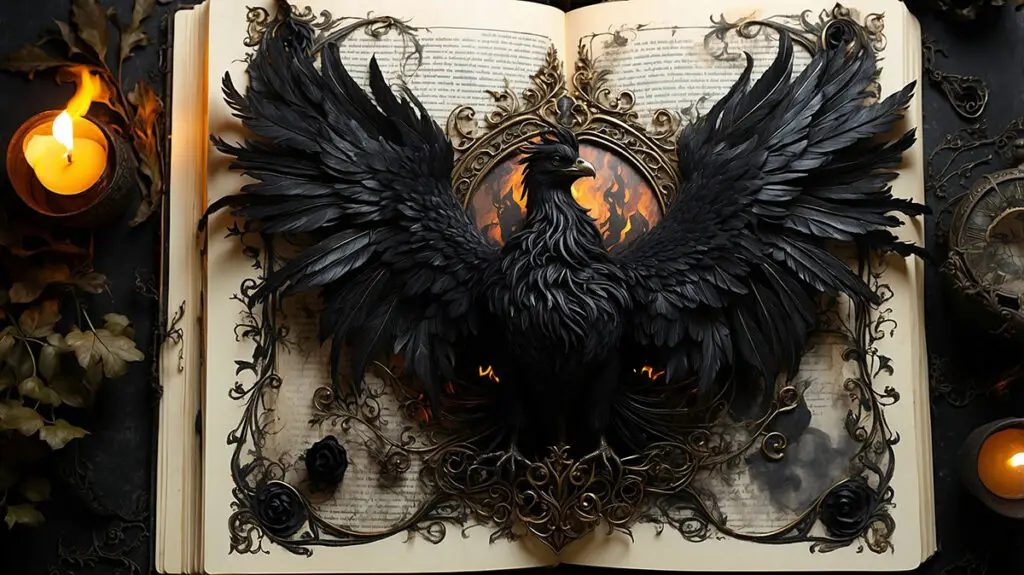The phoenix, one of mythology’s most enduring symbols, has captivated human imagination for millennia, transforming from an ancient sacred bird into a beloved magical creature in modern fantasy. From the Egyptian Bennu to Harry Potter’s loyal Fawkes, this immortal firebird has evolved dramatically while maintaining its core essence of rebirth and renewal.

A Quick Flight Through History
The phoenix’s story begins in antiquity. In ancient Egypt, the Bennu bird was linked to the sun god Ra, a heron-like creature associated with the cycle of the Nile and eternal rebirth. The Greeks later adopted and adapted the myth: Herodotus described a golden-red bird that lived for 500 years, built its own funeral pyre, and rose anew from the ashes. Roman writers like Ovid and Pliny the Elder reinforced this fiery cycle of death and renewal, making the phoenix a symbol of immortality.
But the myth did not stop in the Mediterranean.
In Chinese culture, the Fenghuang represented harmony, virtue, and feminine grace, not necessarily fire or ashes but cosmic balance.
In Persian mythology, the Simurgh was a benevolent giant bird, wise and protective.
In Christian medieval texts, the phoenix became an allegory of Christ’s resurrection, emphasizing spiritual rebirth.
Across cultures, the phoenix always carried the weight of symbolism: not just a magical bird, but an idea of renewal, resilience, and the eternal cycle of life and death.

Modern Phoenix: Digital Flames and Pop Culture
Contemporary media has dramatically expanded phoenix mythology, adapting ancient symbolism for new audiences. In video games, phoenixes appear as powerful summons and resurrection items. The Final Fantasy series features Phoenix as both a summon that deals fire damage while reviving fallen allies, and as Phoenix Down items that resurrect party members. This perfectly captures the dual nature of destruction and renewal central to phoenix mythology.
Manga and anime have embraced phoenix imagery extensively. Osamu Tezuka’s epic manga series Phoenix (1954-1988) explored themes of reincarnation and immortality across different time periods, featuring a cosmic phoenix whose blood grants eternal life. This work elevated the phoenix from simple mythological creature to profound symbol of life’s cyclical nature.
In modern films and television, phoenixes represent personal transformation and resilience. Cities like Phoenix, Arizona and Atlanta, Georgia have adopted the phoenix as their symbol, representing rebirth after destruction. The creature continues to appear in various media as a metaphor for overcoming adversity and emerging stronger.

Fawkes: The Phoenix at Hogwarts
Enter Fawkes, Albus Dumbledore’s loyal phoenix in Harry Potter. Rowling’s version remains close to ancient tradition yet uniquely tailored for her world.
Similarities with myth:
Like the Greek phoenix, Fawkes bursts into flames at the end of his life and is reborn from ashes.
He is tied to light and fire, echoing the solar symbolism of the Egyptian Bennu.
His healing tears and protective nature align with the benevolent phoenix of Christian and Persian traditions.
Differences from myth:
Ancient texts often emphasize the phoenix as solitary, aloof, almost cosmic. Fawkes, however, is deeply personal: a companion, helper, and savior of heroes.
Rowling gave Fawkes unique magical abilities — healing tears, teleportation, and the power to carry heavy loads — making him not just symbolic, but practical in her narrative.
Unlike the often remote or divine phoenix, Fawkes has character and loyalty. His bond with Dumbledore (and later Harry) makes him emotionally resonant in a way ancient myths rarely attempted.
In The Chamber of Secrets, when Fawkes saves Harry with his tears and delivers the Sorting Hat, he embodies the eternal phoenix symbolism of hope in moments of despair. Yet he also evolves into something more: not just an allegory, but a beloved character.
What the Phoenix Symbolizes Today
Contemporary applications continue expanding. Phoenix imagery appears in therapy and self-help contexts as metaphors for overcoming trauma. Cities recovering from disasters adopt phoenix symbols. The creature’s evolution from ancient myth to modern psychological tool demonstrates mythology’s continuing relevance in helping humans process change, loss, and renewal.
The phoenix’s journey from Egyptian temple walls to Hogwarts’ halls illustrates mythology’s living nature – ancient wisdom continually reborn in new forms, carrying eternal truths through ever-changing cultural landscapes. Like the phoenix itself, these myths die and rise again, forever renewed yet eternally recognizable.